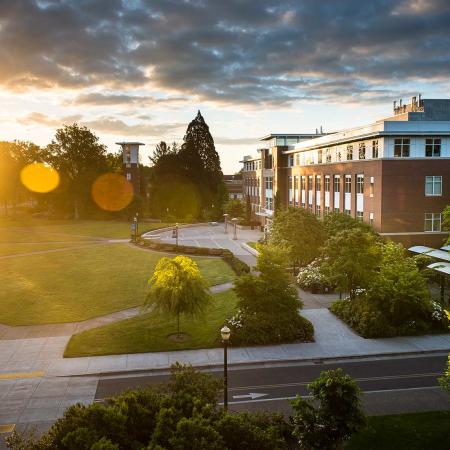The spring 2017 Milne Lecture features Michael I. Jordan, the Pehong Chen Distinguished Professor in the Department of Electrical Engineering and Computer Science and the Department of Statistics at the University of California, Berkeley. He will discuss “On Computational Thinking, Inferential Thinking and Data Science."

The Spring 2017 Milne Lecture on big data

Professor Michael I. Jordan
Hosted by the Department of Statistics, the spring Milne Lecture will be held on Tuesday, May 16 at 4 pm in the Learning and Innovation Center, Room 128. The Milne Lecture in Mathematics, Statistics and Computer Science is a collaborative series of distinguished lectures launched in 1981 to honor founding Mathematics Department Chair and William Edmond Milne, a pioneer in numerical analysis.
In his lecture, Jordan will discuss how the rapid growth in the size and scope of datasets in science and technology has created a need for novel foundational perspectives on data analysis that blend the inferential and computational sciences. That classical perspectives from these fields are not adequate to address emerging problems in "Big Data" is apparent from their sharply divergent nature at an elementary level. In computer science, for example, the growth of the number of data points is a source of "complexity" that must be tamed via algorithms or hardware, whereas in statistics the growth of the number of data points is a source of "simplicity" in that inferences are generally stronger and asymptotic results can be invoked.
On a formal level, the gap is made evident by the lack of a role for computational concepts such as "runtime" in core statistical theory and the lack of a role for statistical concepts such as "risk" in core computational theory. Jordan will present several research vignettes aimed at bridging computation and statistics, including the problem of inference under privacy and communication constraints, and methods for trading off the speed and accuracy of inference.
Michael I. Jordan is the Pehong Chen Distinguished Professor in the Department of Electrical Engineering and Computer Science and the Department of Statistics at the University of California, Berkeley. He received his Masters in Mathematics from Arizona State University, and earned his Ph.D. in Cognitive Science in 1985 from the University of California, San Diego. He was a professor at Massachusetts Institute of Technology from 1988 to 1998. His research interests bridge the computational, statistical, cognitive and biological sciences, and have focused in recent years on Bayesian nonparametric analysis, probabilistic graphical models, spectral methods, kernel machines and applications to problems in distributed computing systems, natural language processing, signal processing and statistical genetics.
Professor Jordan is a member of the National Academy of Sciences, a member of the National Academy of Engineering and a member of the American Academy of Arts and Sciences. He is a Fellow of the American Association for the Advancement of Science. He has been named a Neyman Lecturer and a Medallion Lecturer by the Institute of Mathematical Statistics. He received the International Joint Conference on Artificial Intelligence Research Excellence Award in 2016, the David E. Rumelhart Prize in 2015 and the Association for Computer Machinery (ACM)/Association for the Advancement of Artificial Intelligence (AAAI) Allen Newell Award in 2009. He is a Fellow of the AAAI, ACM, American Statistical Association, Cognitive Science Society, Institute for Electrical and Electronics Engineers, Institute of Mathematics and Statistics, International Society for Bayesian Analysis and Society for Industrial and Applied Mathematics.
Support for the Milne Lectures comes from a generous gift from the Milne family as well as support from the College of Science’s Departments of Mathematics and Statistics, the College of Engineering‘s School of Electrical Engineering and Computer Science and from the Center for Genome Research and Biocomputing at OSU.



